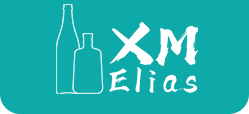News Categories
Understanding Pharmaceutical Glass Bottles: Essential Knowledge for Professionals
Date:
2024/09/11
Share:
Pharmaceutical glass bottles play a vital role in the healthcare sector by ensuring the safe and effective storage of medications and other sensitive products. These bottles are primarily made from high-quality glass, which is favored for its inert properties, chemical resistance, and durability. Unlike plastic alternatives, glass does not interact with the substances contained within, helping to preserve the integrity and efficacy of pharmaceuticals.
One of the most significant advantages of using glass bottles is their ability to provide a hermetic seal, which is crucial for preventing contamination and maintaining sterility. This is particularly important for injectable medications, vaccines, and other sterile products that require stringent safety measures. The airtight seal ensures that the contents remain uncontaminated by external elements, thereby enhancing patient safety.
Moreover, glass is 100% recyclable, making it an environmentally friendly option for packaging. In an age where sustainability is becoming increasingly important, the use of recyclable materials can significantly reduce the environmental impact of pharmaceutical operations. The ability to recycle glass bottles also contributes to a circular economy, where materials are reused rather than disposed of, aligning with modern sustainable practices.
In terms of design and functionality, pharmaceutical glass bottles come in various shapes and sizes, each tailored to meet specific requirements. For example, amber glass is commonly used for light-sensitive medications, as it protects sensitive compounds from degradation due to UV exposure. Additionally, the use of different closures, such as rubber stoppers and aluminum caps, can enhance the usability and safety of the bottles.
Furthermore, the manufacturing process of pharmaceutical glass bottles adheres to stringent regulations and standards to ensure quality and safety. This includes thorough testing for physical and chemical properties, as well as compliance with Good Manufacturing Practices (GMP). These rigorous standards ensure that the bottles meet the necessary criteria for pharmaceutical use.
Professionals in the packaging industry must stay informed about the latest advancements in glass technology and innovations that enhance the functionality of pharmaceutical glass bottles. For instance, the integration of smart technologies into packaging solutions can provide real-time monitoring of product integrity, offering additional layers of safety and security.
In summary, pharmaceutical glass bottles are an essential element in the healthcare industry, providing safety, efficacy, and sustainability. Their inert properties, recyclability, and compliance with stringent regulations make them an ideal choice for packaging pharmaceuticals. As the industry evolves, staying abreast of developments in glass packaging will be imperative for professionals seeking to enhance their operations and meet the demands of a changing market.
One of the most significant advantages of using glass bottles is their ability to provide a hermetic seal, which is crucial for preventing contamination and maintaining sterility. This is particularly important for injectable medications, vaccines, and other sterile products that require stringent safety measures. The airtight seal ensures that the contents remain uncontaminated by external elements, thereby enhancing patient safety.
Moreover, glass is 100% recyclable, making it an environmentally friendly option for packaging. In an age where sustainability is becoming increasingly important, the use of recyclable materials can significantly reduce the environmental impact of pharmaceutical operations. The ability to recycle glass bottles also contributes to a circular economy, where materials are reused rather than disposed of, aligning with modern sustainable practices.
In terms of design and functionality, pharmaceutical glass bottles come in various shapes and sizes, each tailored to meet specific requirements. For example, amber glass is commonly used for light-sensitive medications, as it protects sensitive compounds from degradation due to UV exposure. Additionally, the use of different closures, such as rubber stoppers and aluminum caps, can enhance the usability and safety of the bottles.
Furthermore, the manufacturing process of pharmaceutical glass bottles adheres to stringent regulations and standards to ensure quality and safety. This includes thorough testing for physical and chemical properties, as well as compliance with Good Manufacturing Practices (GMP). These rigorous standards ensure that the bottles meet the necessary criteria for pharmaceutical use.
Professionals in the packaging industry must stay informed about the latest advancements in glass technology and innovations that enhance the functionality of pharmaceutical glass bottles. For instance, the integration of smart technologies into packaging solutions can provide real-time monitoring of product integrity, offering additional layers of safety and security.
In summary, pharmaceutical glass bottles are an essential element in the healthcare industry, providing safety, efficacy, and sustainability. Their inert properties, recyclability, and compliance with stringent regulations make them an ideal choice for packaging pharmaceuticals. As the industry evolves, staying abreast of developments in glass packaging will be imperative for professionals seeking to enhance their operations and meet the demands of a changing market.
Key words:












